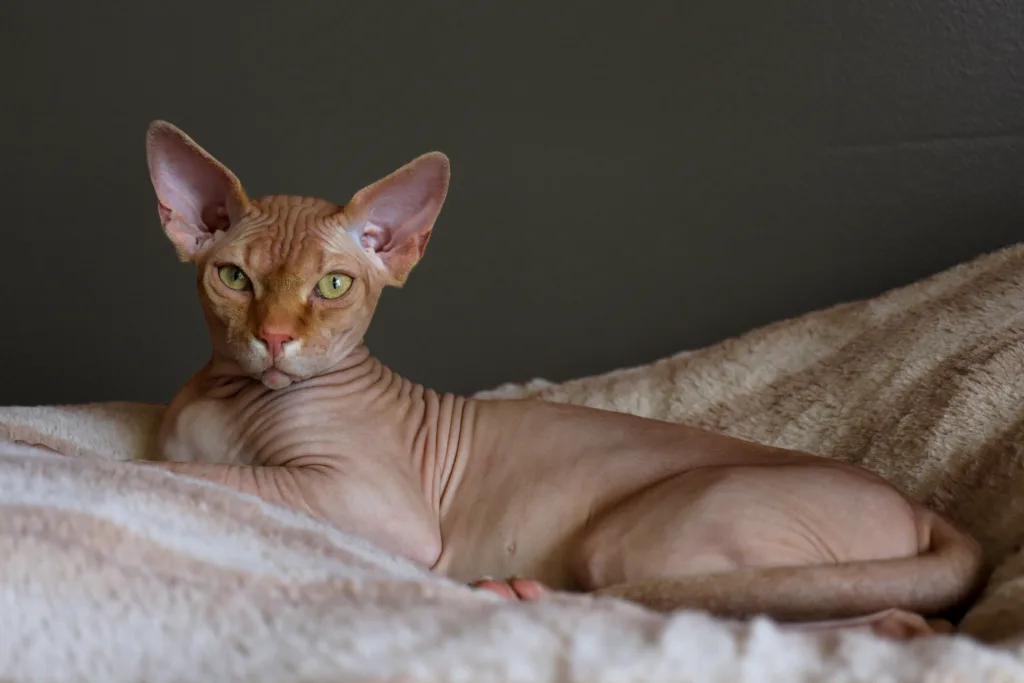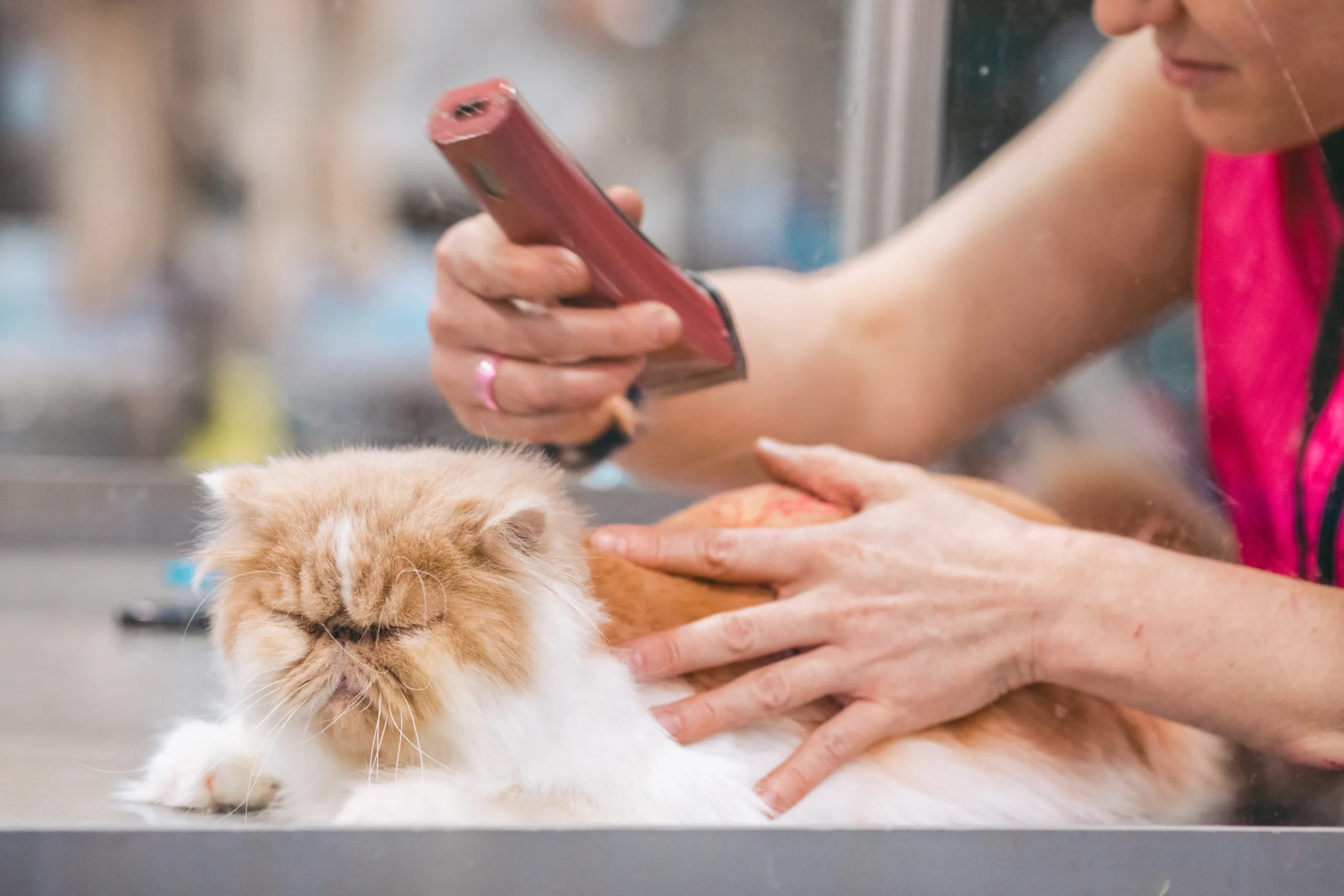Introduction
Shaved cats have become a topic of intrigue and curiosity among cat owners and enthusiasts. The practice of shaving cats involves trimming or completely removing their fur, resulting in a unique and distinct appearance. While the concept of shaving cats may be unfamiliar to some, it has gained popularity for various reasons, including practical grooming considerations and aesthetic preferences. In this article, we will delve into the world of shaved cats, exploring the reasons behind this grooming practice, the pros and cons, and essential care tips for maintaining the well-being of these special feline companions.
More about Cats
Addressing Common Misconceptions:
Before we dive into the details, it’s important to address a few common misconceptions surrounding shaved cats. Some individuals may have concerns or misconceptions about this grooming practice. However, it’s essential to approach the topic with an open mind and consider the following:
- Shaving cats is not inherently cruel: When done correctly and for valid reasons, cat shaving is not considered cruel. The well-being and comfort of the cat should always be prioritized, and professional grooming or veterinary guidance is crucial in ensuring a safe and appropriate shaving process.
- Different breeds may have different grooming needs: While many cat breeds can be shaved, it’s important to consider their specific characteristics, coat type, and any underlying health conditions. Certain breeds, such as Sphynx or Rex cats, naturally have little to no fur and do not require shaving.
Now that we have addressed these misconceptions, let’s explore the fascinating world of shaved cats and the reasons why this grooming practice has gained popularity.
Why Are Cats Shaved?
Cat shaving has gained popularity for various reasons, driven by both practical and aesthetic considerations. Let’s explore the diverse reasons why cat owners may choose to have their feline companions shaved:
- Medical purposes: Shaving cats can serve medical purposes, including:
- Surgical procedures: Before surgeries, veterinarians may shave specific areas of a cat’s body to provide better visibility and facilitate aseptic conditions during the operation.
- Wound management: Shaving the fur around a wound allows for easier cleaning, proper application of medications, and monitoring of the healing process.
- Skin conditions: Some cats may develop skin conditions that require shaving to manage and treat the affected areas effectively.
- Grooming and hygiene: Regular grooming is crucial for maintaining a cat’s overall well-being. Shaving can contribute to grooming and hygiene in the following ways:
- Preventing matting: Long-haired cats are prone to developing mats, which can be uncomfortable and lead to skin irritation. Shaving helps prevent mats from forming and makes grooming more manageable.
- Hairball control: Cats are meticulous groomers, and excessive grooming can lead to the ingestion of fur, resulting in hairballs. Shaving can reduce shedding and minimize the occurrence of hairballs.
- Managing shedding: Some cat owners opt for shaving to reduce excessive shedding, making it easier to maintain a clean environment and minimize allergies.
- Temperature regulation: Cats with long or dense fur may struggle with heat regulation, especially in warm climates. Shaving can help cats stay cool by allowing better airflow and preventing overheating.
- Aesthetic preferences: Some cat owners appreciate the sleek appearance of a shaved cat. Shaving can showcase a cat’s features, highlight unique markings, or simply create a distinct and fashionable look.
It’s important to note that cat shaving should be done with careful consideration of the individual cat’s needs, breed, and health. Consulting with a professional groomer or veterinarian is essential to ensure the shaving process is conducted safely and in the best interest of the cat.
Pros of Shaving Cats:
Shaving cats can offer several potential benefits, both for the cats themselves and their owners. Let’s explore the advantages of cat shaving:
- Reduced shedding and hairballs: Shaving cats can significantly reduce shedding, minimizing the amount of loose fur in the home and helping to prevent the formation of hairballs. This benefit is particularly notable for long-haired breeds that tend to have more substantial shedding.
- Easier maintenance and grooming: Shaving simplifies the grooming process for both the cat and the owner. With less fur to manage, brushing becomes more efficient and less time-consuming. It also reduces the likelihood of tangles, mats, and knots, making grooming sessions more comfortable for the cat.
- Enhanced comfort in hot weather: Cats with thick or long fur may struggle to regulate their body temperature in hot weather. Shaving can provide them with relief by allowing better heat dissipation and improving overall comfort during warmer seasons.
- Improved visibility of skin conditions or parasites: Shaving exposes the skin, making it easier to spot any potential skin issues, such as rashes, irritations, or parasites like fleas or ticks. Early detection and prompt treatment can prevent these conditions from worsening.
- Potential allergy management: Some individuals may be allergic to cat dander, which is primarily found in the cat’s fur. Shaving can help reduce the amount of dander released into the environment, potentially providing relief for individuals with cat allergies.
It’s important to note that while these benefits exist, not all cats may necessarily experience them to the same degree. Factors such as the cat’s breed, individual coat characteristics, and personal preferences should be considered when determining whether shaving is appropriate for a particular cat. Consulting with a professional groomer or veterinarian is essential to assess the suitability and best approach for each cat’s grooming needs.
Cons of Shaving Cats:
While there are benefits to shaving cats, it’s important to consider the potential drawbacks and considerations associated with this grooming practice. Here are some factors to keep in mind:
- Increased susceptibility to sunburn and temperature extremes: A cat’s fur acts as a natural barrier, providing protection against the sun’s harmful UV rays and helping to regulate body temperature. Shaving can remove this protective layer, making shaved cats more prone to sunburn and potentially uncomfortable in extreme temperatures.
- Altered aesthetic appearance: Shaving significantly changes a cat’s appearance, and not all cat owners may prefer the look of a shaved cat. It’s important to consider the personal preferences and aesthetic sensibilities of both the owner and the cat when deciding on a shaving approach.
- Emotional and psychological impacts. Some cats may have a strong attachment to their fur and find the shaving process stressful or disorienting. Cats rely on their fur for sensory input, comfort, and self-expression, so shaving can potentially have emotional and psychological effects on certain individuals. It’s crucial to monitor a cat’s behavior and well-being during and after the shaving process.
- Limited protection against environmental elements: The fur of a cat serves as a natural barrier against environmental elements such as insects, minor scratches, and debris. Shaving removes this protective layer, leaving the cat more vulnerable to potential irritants or discomfort from external factors. Care should be taken to provide appropriate environmental enrichment and protection for shaved cats.
It’s important to weigh these potential cons against the specific needs and circumstances of each individual cat. Consulting with a professional groomer or veterinarian can help in assessing the suitability of shaving for a particular cat and determining the best approach to minimize any potential negative impacts.

Care Tips for Shaved Cats:
Proper care is essential to ensure the well-being and comfort of shaved cats. Here are some practical tips to help you care for your shaved feline companion:
- Sun protection: Shaved cats are more susceptible to sunburn since their fur no longer provides natural UV protection. To protect your cat from harmful sun exposure:
- Use pet-safe sunscreen specifically formulated for cats on exposed skin areas, such as the ears, nose, and any shaved areas.
- Create shaded areas indoors and outdoors where your cat can seek refuge from direct sunlight.
- Temperature regulation: Shaving can impact a cat’s ability to regulate body temperature, so it’s important to help them stay cool:
- Provide cooling mats or beds for your cat to lie on.
- Use fans or adjust the indoor climate to maintain a comfortable temperature.
- Ensure fresh water is always available for hydration.
- Moisturizing the skin: Shaved cats may experience dryness or irritation on their exposed skin. Follow these guidelines:
- Use veterinarian-approved moisturizers or lotions to keep the skin hydrated and prevent dryness or discomfort.
- Consult with your veterinarian to determine the most suitable products for your cat’s specific needs.
- Regular grooming: Even though your cat is shaved, grooming is still essential to maintain their overall well-being:
- Brush your cat regularly to remove loose fur and prevent matting. Use a brush suitable for your cat’s coat type.
- Trim your cat’s nails regularly to prevent them from becoming too long or causing discomfort.
- Maintain proper hygiene by gently wiping your cat’s ears, eyes, and other areas as needed.
- Monitoring for behavioral changes: Pay close attention to your shaved cat’s behavior and overall health:
- Be attentive to any signs of stress, discomfort, or changes in behavior.
- Contact your veterinarian if you notice any unusual symptoms, as it may indicate an underlying health issue.
By following these care tips, you can ensure that your shaved cat remains healthy, comfortable, and happy.
FAQs on Shaved Cats
Here are answers to frequently asked questions about shaving cats:
Q: Is it OK if I shave my cat?
A: Shaving a cat can be appropriate in certain circumstances, such as for medical or grooming purposes. However, it’s important to consult with a professional groomer or veterinarian before proceeding to ensure the shaving process is done safely and in the best interest of the cat.
Q: Why would a cat be shaved?
A: Cats may be shaved for various reasons, including medical purposes, grooming and hygiene, temperature regulation, and aesthetic preferences. Shaving can help with surgical procedures, wound management, prevent matting, control shedding, provide relief in warm climates, and achieve a specific look desired by the owner.
Q: Does shaving cats help with hairballs?
A: Shaving cats can reduce excessive shedding and minimize the occurrence of hairballs. However, it’s important to note that hairballs can still form if a cat ingests fur during grooming, even if they are shaved. Regular grooming, including brushing, can help further minimize hairball formation.
Q: Are haircuts good for cats?
A: Haircuts or shaving can be beneficial for certain cats, depending on their individual needs and circumstances. It’s important to consider factors such as the cat’s breed, coat type, and overall health before deciding on a haircut. Consulting with a professional groomer or veterinarian is recommended to determine the appropriateness of a haircut for your specific cat.
Conclusion
In conclusion, the topic of shaved cats has been explored, highlighting various aspects related to this grooming practice. We discussed the pros and cons of shaving cats, as well as provided care tips for owners of shaved cats.
Shaving cats can offer benefits such as reduced shedding, easier maintenance, enhanced comfort in hot weather, improved visibility of skin conditions, and potential allergy management. However, it’s essential to consider the potential drawbacks, including increased susceptibility to sunburn, altered aesthetic appearance, and potential emotional impacts on some cats.
To care for a shaved cat, it’s crucial to provide sun protection, regulate temperature, moisturize the skin, engage in regular grooming. Monitor for any behavioral changes or signs of discomfort. Additionally, cat owners should approach shaving with caution, considering the individual cat’s needs, breed, and consulting with professional groomers or veterinarians.
Ultimately, the well-being and comfort of the cat should be the top priority. By prioritizing their needs and ensuring grooming practices promote a healthy and happy feline lifestyle. Cat owners can maintain a strong bond with their beloved companions.
Click here for more
